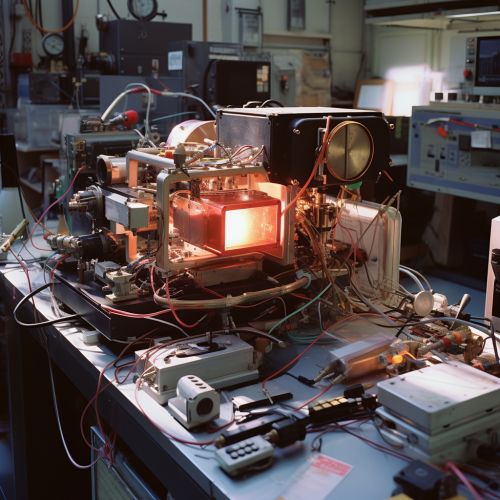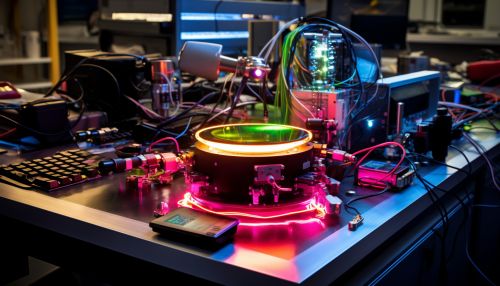Pulsed Electron Paramagnetic Resonance
Introduction
Pulsed Electron Paramagnetic Resonance (EPR), also known as Pulsed Electron Spin Resonance (ESR), is a specialized area of spectroscopy that specifically targets species with unpaired electrons. Unlike continuous wave EPR, pulsed EPR allows for the direct measurement of spin-lattice (T1) and spin-spin (T2) relaxation times, providing a wealth of information about the system under study.


Principles of Pulsed EPR
Pulsed EPR operates on the same fundamental principles as NMR, but targets electron spins instead of nuclear spins. The technique involves the application of a strong magnetic field to align the spins of unpaired electrons in the sample, followed by a short, intense pulse of microwave radiation. This pulse flips the spins, causing them to precess around the magnetic field direction. The precession induces a signal in a pickup coil, which is then amplified and recorded.
Experimental Setup
The experimental setup for pulsed EPR involves a magnet to generate the strong magnetic field, a microwave bridge to generate the microwave pulses, and a detection system to pick up the signal from the sample. The sample is typically placed in a resonator, which is designed to enhance the microwave magnetic field at the sample location.
Techniques
Several techniques have been developed in pulsed EPR to study different aspects of systems with unpaired electrons. These include Electron Spin Echo Envelope Modulation (ESEEM), Electron Nuclear Double Resonance (ENDOR), and Double Electron-Electron Resonance (DEER).
Electron Spin Echo Envelope Modulation (ESEEM)
ESEEM is a technique used to study the interactions between the unpaired electron spins and their surrounding nuclear spins. This is achieved by measuring the modulation of the spin echo envelope as a function of the pulse separation time.
Electron Nuclear Double Resonance (ENDOR)
ENDOR is a technique used to study the hyperfine interactions between unpaired electron spins and nearby nuclear spins. This is done by applying a second radiofrequency pulse to flip the nuclear spins, and observing the effect on the electron spin echo.
Double Electron-Electron Resonance (DEER)
DEER, also known as Pulsed Electron Double Resonance (PELDOR), is a technique used to measure distances between unpaired electron spins. This is achieved by applying a second microwave pulse to flip one of the spins, and observing the effect on the spin echo of the other spin.
Applications
Pulsed EPR has a wide range of applications in fields such as chemistry, biology, and materials science. In chemistry, it can be used to study the structure and dynamics of radicals and transition metal complexes. In biology, it can be used to study the structure and dynamics of proteins and other biomolecules. In materials science, it can be used to study the properties of semiconductors, superconductors, and magnetic materials.
